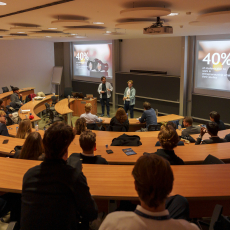The world economy in 2022 witnessed a unique set of shocks that distressed growth in the world’s three major economies –the United States, China and the European Union, with significant spillover effects to other countries.
The 2023 edition of the Global Labour Resilience Index (GLRI) continues to build upon Whiteshield’s resilience capabilities framework and places an emphasis on the key policies and institutions that countries need to have in place to better prepare for both shorter-term shocks such as COVID-19, rising inflation, tightening financial conditions, and longer-term stresses such as technological disruptions and green transitions.
The gap between top and bottom performers in the GLRI is widening
In the last five years, the resilience scores of the top-performing countries have improved, while the rest did not exhibit any pronounced dynamics.
The top 10 countries have succeeded in avoiding major disruptions in their labour markets owing to their strong institutional capacities to absorb, adapt and transform in the face of shocks and, consequently, were able to start the recovery ahead of others.
The other group of countries have experienced severe labour market disruptions following the outbreak of COVID-19 on account of their weak cyclical capabilities.
Too many countries are left behind
More than one-third of the countries (49 countries out of 136) score less than 50 out of 100 on labour market resilience. All of these countries are in the lower and middle-income groups and more than half (30) of them are in the Sub-Saharan region. Their low GLRI scores and rankings are driven mainly by weaknesses in their adaptive capabilities.
Failing to improve labour market resilience is a cause for concern, as many nations did not have the tools or capabilities in place to cope with COVID-19 and its aftermath.
Consequently, a two-speed post-pandemic recovery of global labour markets is underway and is worsening inequalities
Countries are manifesting divergent recovery paths with some – mostly developed – rapidly returning to pre-crisis levels of employment while others – mostly developing countries – still suffering from relatively large and persistent employment deficits.
Resilience is not just about how labour markets respond and recover from short-term shocks such as COVID-19, it is also about countries’ ability to prepare for the future of work.
The digital transformation of labour markets will continue to accelerate and test resilience. Governments and policymakers must respond to this by equipping their labour force with the right skills, capabilities and knowledge and turn this transformation into an opportunity.
The green transition offers a substantial opportunity for labour markets and must be at the heart of economic growth plans. Failing to align labour markets with these trends will reduce resilience, increase vulnerabilities, and jeopardise growth.
A key enabler to counter the effects of a shock and ensure quick recovery is to adopt the right labour market policies
Denmark ranks first in this year’s GLRI, having occupied first place in its cyclical pillar, and fourth in its structural pillar. This has allowed Denmark to absorb and adapt in the face of the COVID-19 shock when its unemployment rate increased by one percentage point, less than in most OECD countries. This was achieved following the implementation of a temporary job retention scheme that reduced the number of job losses while allowing people to quickly return to work once the economy improved. Post COVID-19, Denmark is enjoying the quickest recovery among OECD countries.
Resilience calls for a more pronounced focus on citizen-centricity
Actual experiences show that countries can build institutions and enact policies that create resilient labour markets. However, their design must consider the absorptive capacity of the people. The traditional approach of formulating policies in isolation of the individuals they are meant to impact can only have a limited influence on building resilient markets. Instead, a more pronounced focus on the citizen and the worker would help improve the conditions of the future workforce through targeted training, upskilling, and re-skilling. To do so, a systematic appraisal of key skills is needed to effectively shape the future state of human capital.
Read the Global Labour Resilience Index 2023




